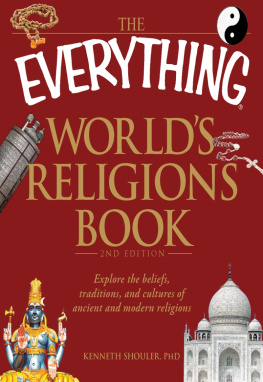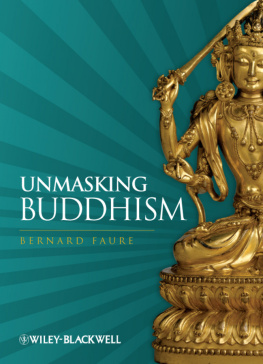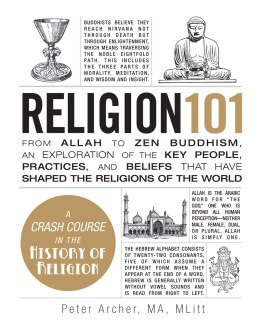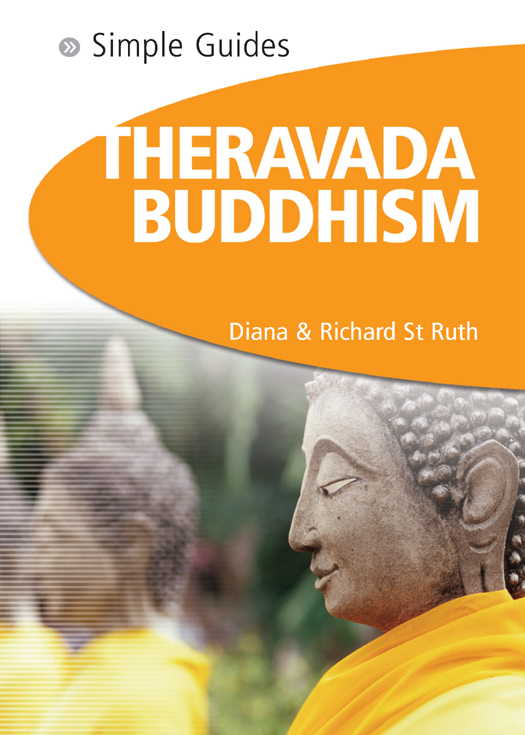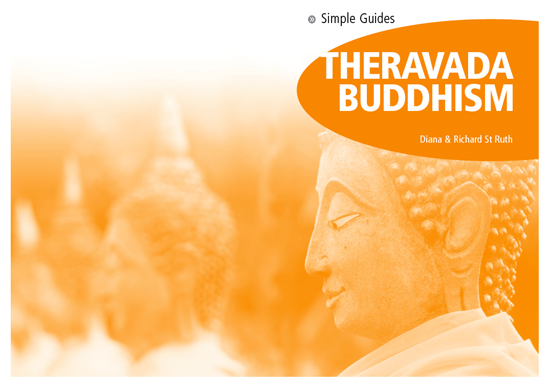Published in Great Britain by
Simple Guides, an imprint of Bravo Ltd
59 Hutton Grove, London N12 8DS
www.kuperard.co.uk
Enquiries:
First published 1998 by Global Books Ltd.
This edition published 2007
Copyright 2007 Bravo Ltd.
All rights reserved. No part of this publication may be reproduced, stored in a retrieval system, or transmitted in any form or by any means without prior permission in writing from the Publishers
eISBN: 978-1-85733-632-0
British Library Cataloguing in Publication Data
Cover image: Buddha images, Ayutthaya. istockphoto/Jeremy Edwards Drawings by Irene Sanderson
v3.1
About the Authors
BOTH THE AUTHORS were born in 1943, Richard in London, Diana in Leicester, and both developed an interest in Buddhism during their teens. They were married in 1969. In 1983 they founded the Buddhist Publishing Group, and in 1989 started the magazine Buddhism Now, of which they are joint editors. They also organize annual Buddhist summer schools. Other titles by the authors include: An Introduction to Buddhism, BPG, 1988; Zen Graffiti, BPG 1991; Experience Beyond Thinking: A Guide to Buddhist Meditation, BPG, 1993; The Little Book of Buddhist Wisdom, Element, 1997; Sitting: A Guide to Buddhist Meditation, Penguin, 1998; and in the Simple Guide series, Zen Buddhism.
We would like to express our grateful thanks to Don E. Whitbread for his helpful comments on the manuscript.
Contents
List of Illustrations
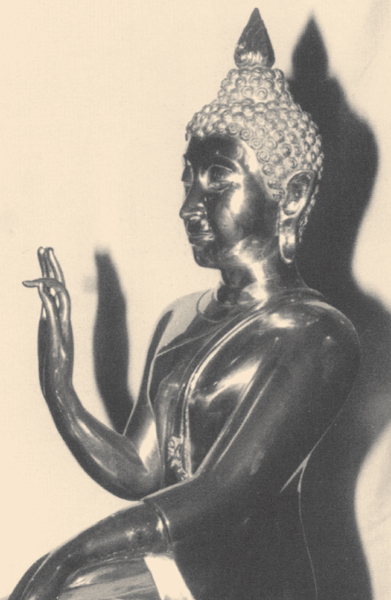
Buddha in teaching pose. Photo: Richard St Ruth
Preface
Theravada is the Buddhism of Sri Lanka, Thailand, Myanmar (Burma), Laos and other Southeast Asian countries.
It is the oldest school of Buddhism that exists today, and the texts which have been preserved, known as the Pali Canon, are believed to contain some of the original teachings of the Buddha. Theravada means Way of the Elders. It is also known as the Southern School of Buddhism.
In general, Theravada is a devotional, gentle form of Buddhism, with emphasis on generosity. Its teachings are based upon tolerance, mindfulness, morality and insight which lead to wisdom, compassion, and liberation from suffering. Its form is centred upon the monastic system, a system which interacts closely with the lay community.
The interest that Theravada has stimulated in the West is twofold (i) in the cultural and monastic traditions which have evolved over the centuries and are being practised to this day, and (ii) discovering the wisdom which lies within its teachings and attempting to apply them in a modern, Western context.
DIANA AND RICHARD ST RUTH
Sandwell, Devon.

Bodhi Leaf from a descendant of the tree under which the Buddha became enlightened
Chapter 1
History
Roots in India
Buddhism has its roots and origins in India, a land which has a long and rich history of religion and culture going back to ancient times.
During the thirteenth century BCE the Indo-lranians (Aryans), a branch of the Indo-Europeans, invaded northwest India. As a result, the Indo-lranian holy texts, the Vedas (compiled between the fifteenth and the sixth centuries BCE ) and the Vedic tradition were gradually assimilated into the older beliefs of the Indian people. Between the sixth and seventh centuries BCE this combination of beliefs gradually developed into what became known as Brahmanism.
It was in this atmosphere of strong cultural traditions and religious beliefs, more than 2,500 years ago, that Siddhattha (the man who was to become the Buddha) was born and embarked upon his spiritual career.

The Stupa, Sanchi, Madhya Pradesh, India
The Oldest School of Buddhism
Though its beginnings are obscure, Theravada is believed to be one of the very oldest schools of Buddhism.
In approximately 483 BCE , not long after the Buddhas death, an important meeting took place among his followers; this became known as the First Council. It is said that at this First Council, one of the Buddhas chief disciples, Ananda, repeated all he could remember of the teachings. Anandas recollections were then learned by rote by many of those present, and these people subsequently passed on their recollections word-for-word to others. This method then became the accepted way of preserving the Buddhas teachings, and what evolved were the repetitive chants that can still be heard today in Buddhist monasteries and temples. It was a way of preserving the teachings; and it probably also had the effect of systematizing them at that time.
Buddhist texts usually open with the words Thus have I heard This reflects the fact that they are being recounted and that what follows are not necessarily the actual words of the Buddha.
Schisms in the Order
During the first hundred years after the demise of the Buddha, some disciples began to specialize in studying the discourses of the Buddha (the suttas), and others made a study of the rules of behaviour (the vinaya) said to have been devised by the Buddha. This specialization led to debate, and these debates, it is thought, led, to the schisms which followed.
A hundred years later, in about 340 BCE , a Second Council was called. It was at this time that a very important split took place. This resulted in what basically became two factions known as the Great Sangha (the Mahasanghikas), and the Sthaviras, meaning the Elders. This division was primarily the result of a dispute about the qualities needed for one to become a Holy One, an Arahant.
During the following century various other schisms took place on the question of doctrine, the rules of the Buddhist order, and a metaphysical view of the Buddha.
The Sthaviras divided into many schools. Convention has it that there were eighteen groups. The texts and commentaries, however, mention more. The Indian Sanskrit term Sthavira meaning Elder became the Pali word Theravada, the Way of the Elders, in the Southeast Asian countries which subsequently adopted and preserved the teachings.
In the eleventh century, these teachings left India, but the Theravada tradition that exists today evolved from these early Indian beginnings.
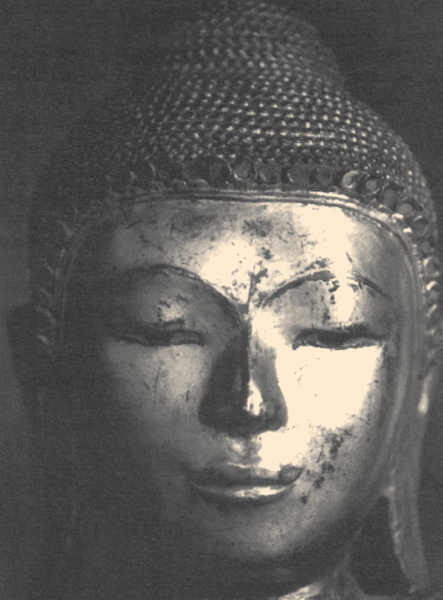
Gold-lacquered Buddha. Burmese 18th - 19th c. (The Bhuddist Society, London.) Photo: Diana St Ruth
Hinayana (the Small Vehicle)




